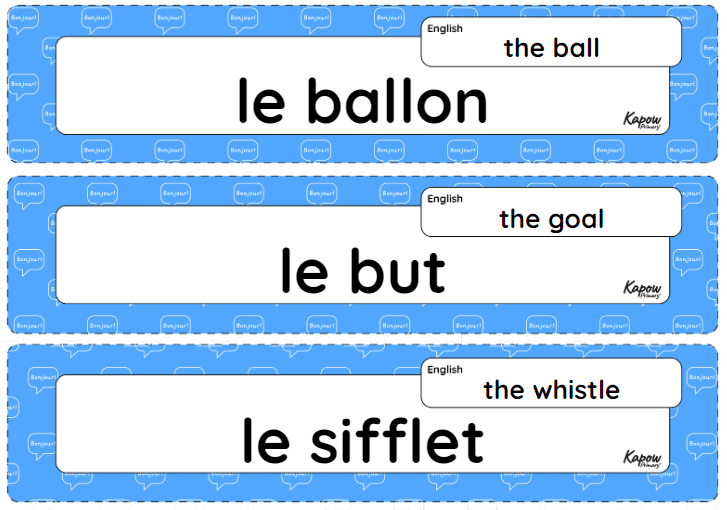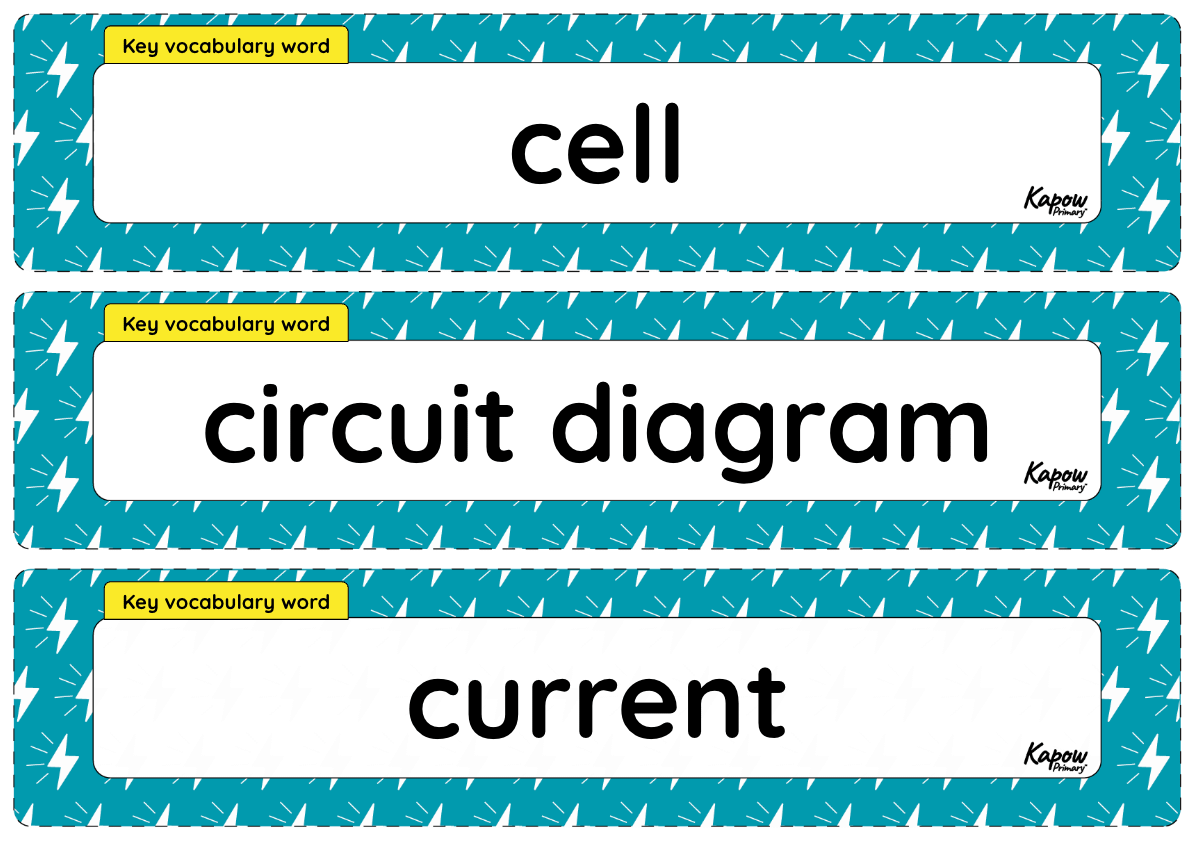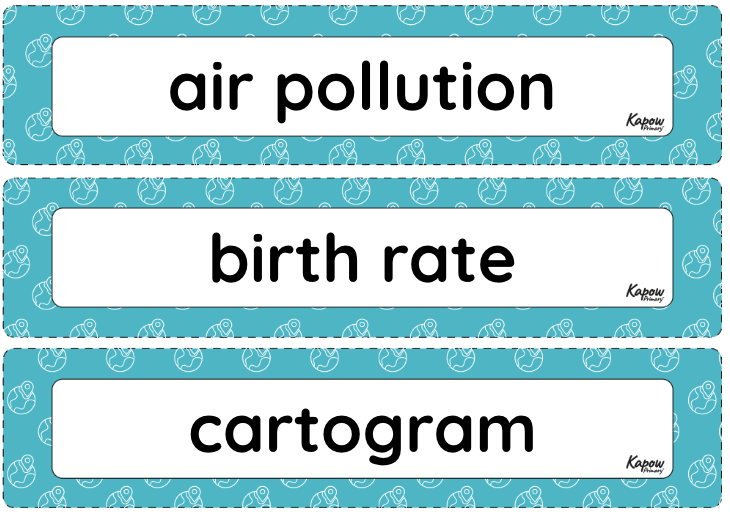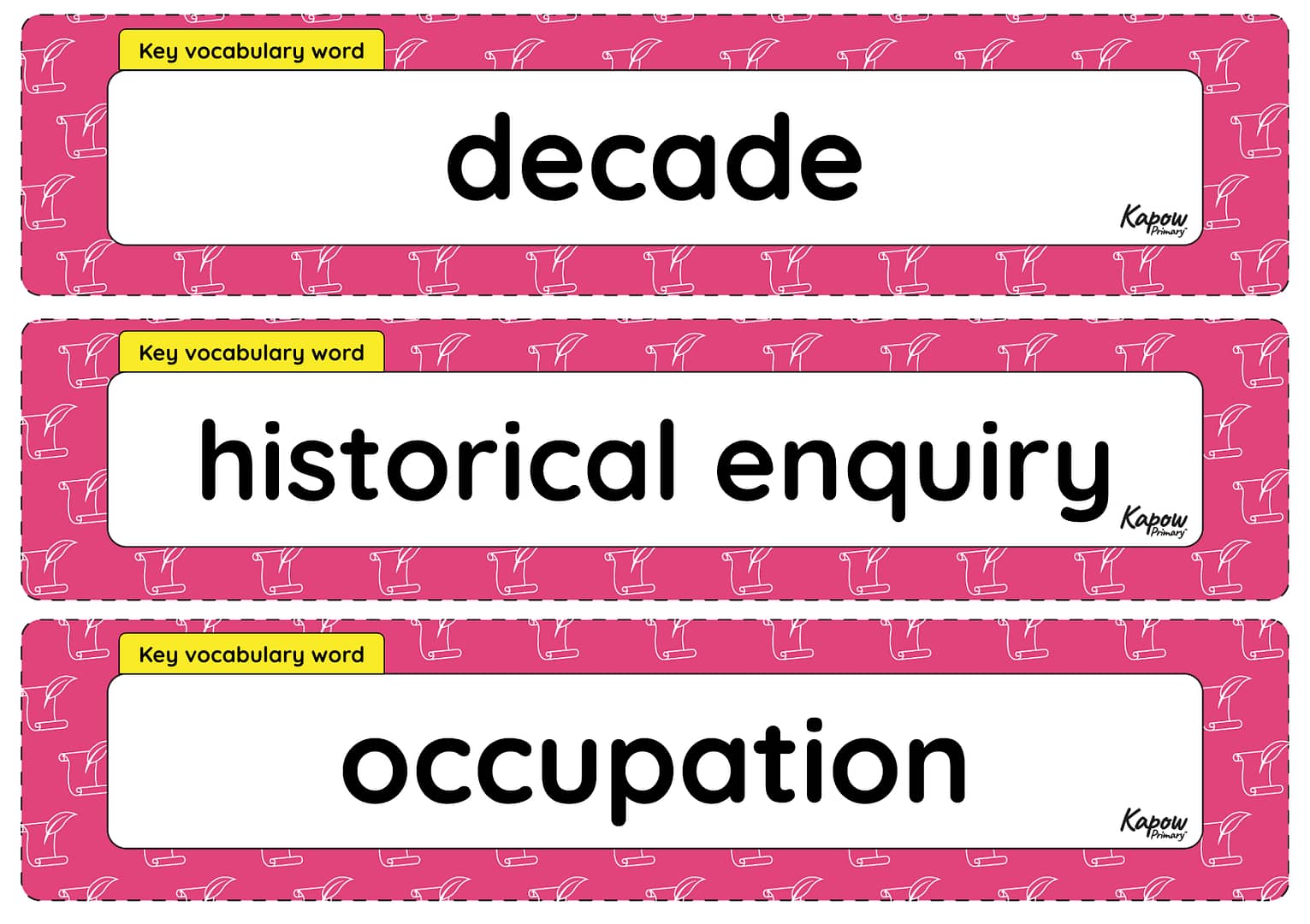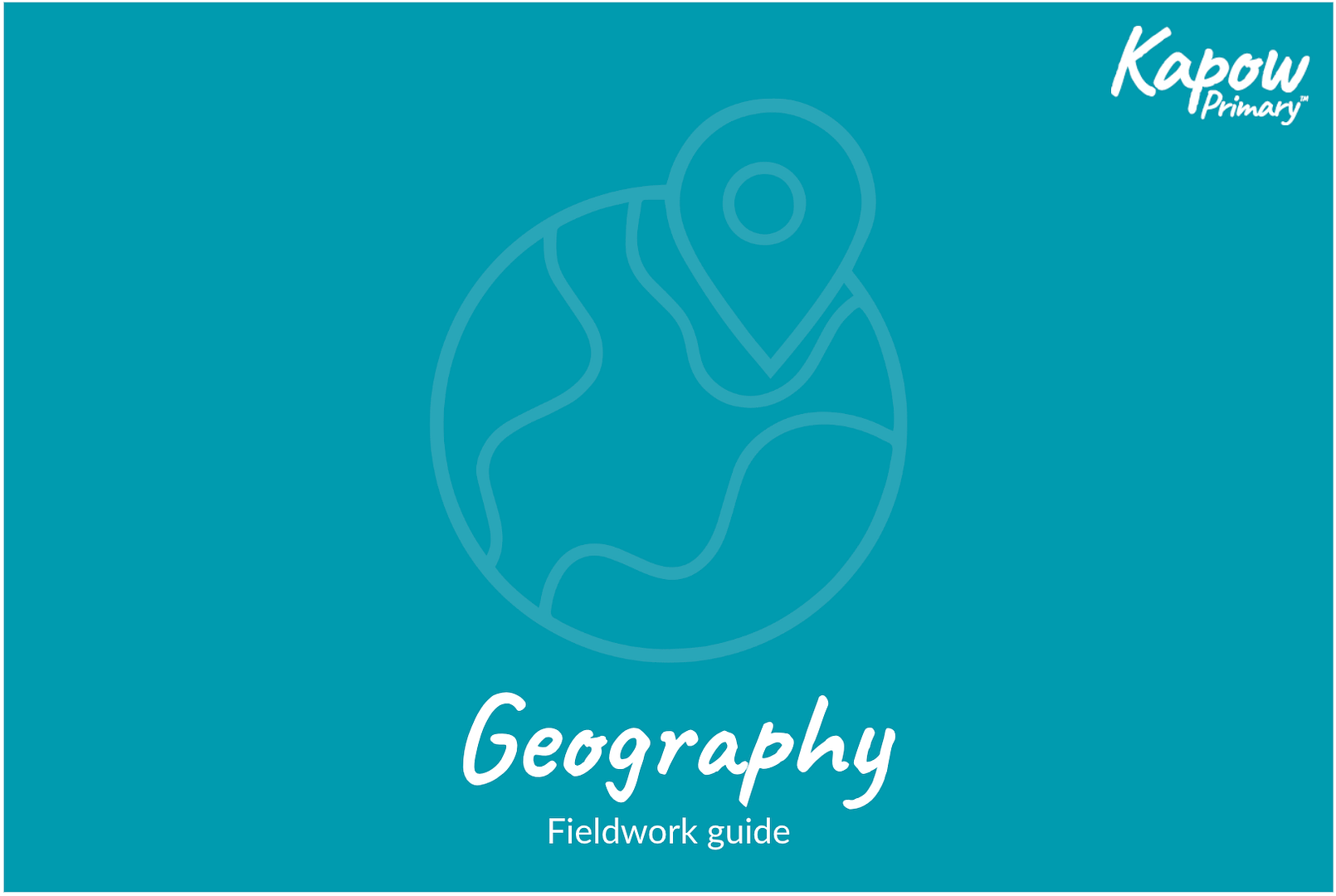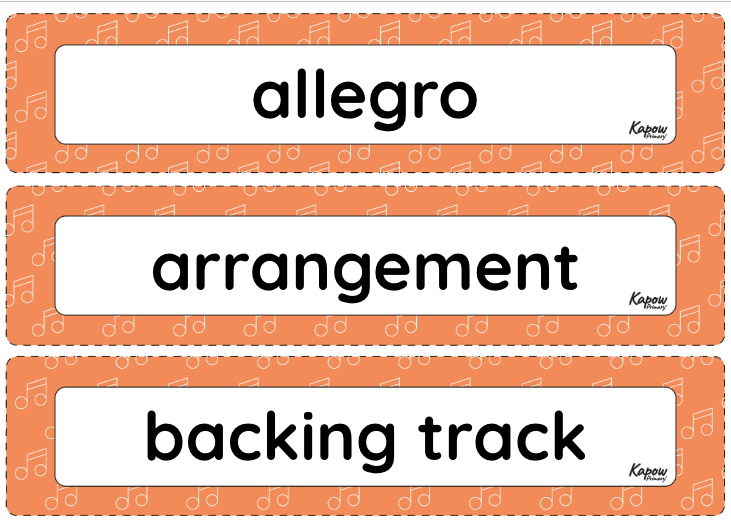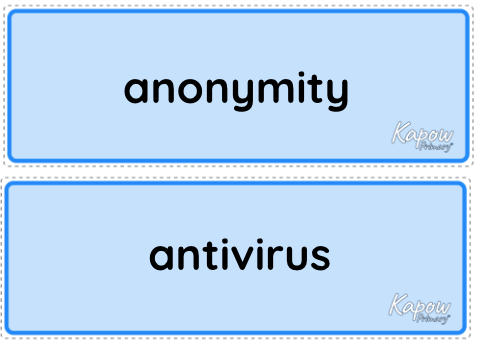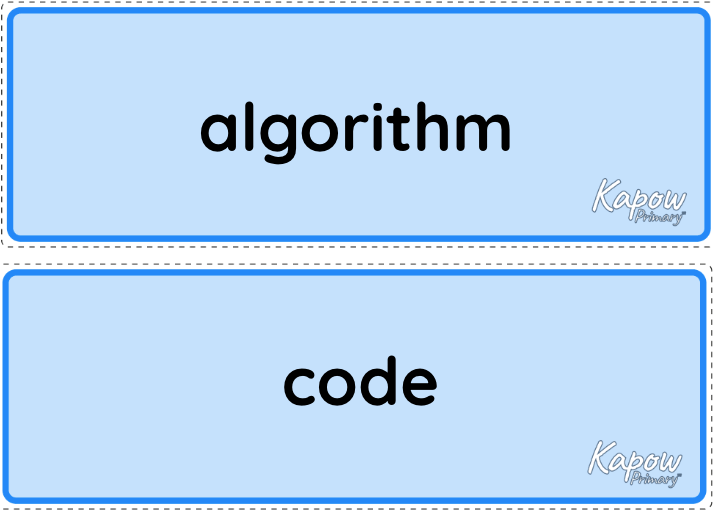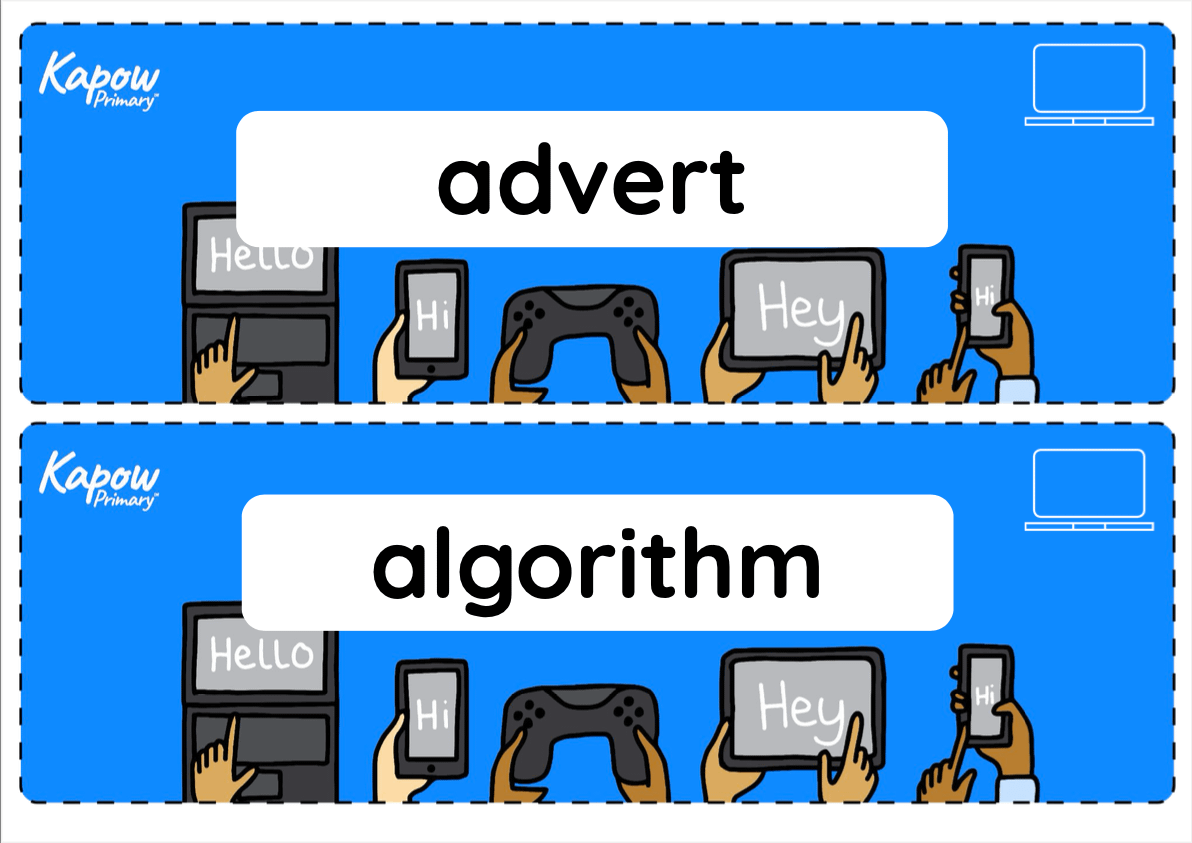year: Year 6
Vocabulary display – Science Y6: Energy: Circuits, batteries and switches
This unit vocabulary display includes keywords from the unit Science, Year 6, Energy: Circuits, batteries and switches and additional unit-specific words that may be helpful in a display.
Key vocabulary is clearly labelled on the display, highlighting essential words that the pupils are expected to retain and reuse in future units. Understanding these words enhances comprehension of the subject and supports understanding of prominent organised worldviews.
See the full Science: Progression of key vocabulary.
Vocabulary display: Why does population change?
This unit vocabulary display includes keywords from the unit Geography, Year 6, Why does population change? and additional unit-specific words that may be helpful in a display.
Vocabulary display – History Y6: What can the census tell us about local areas?
This unit vocabulary display includes keywords from the History, Year 6, What can the census tell us about local areas? unit and additional unit-specific words that may be helpful in a display.
Key vocabulary is clearly labelled on the display, highlighting essential words that the pupils are expected to retain and reuse in future units. Understanding these words enhances comprehension of the subject and supports understanding of key knowledge and skills.
See the full History: Progression of key vocabulary.
Geography: Fieldwork guide
This document collates information about Geography fieldwork from a range of our other Geography documents. It includes a fieldwork planner and progression of vocabulary to support the teaching of our Geography Curriculum.
Vocabulary display: Composing and performing a Leavers’ song
Vocabulary display – Computing Y6: Online safety: Year 6
This unit vocabulary display includes keywords from the unit Computing, Year 6, Online Safety: Year 6 and additional unit-specific words that may be helpful in a display.
Vocabulary display – Computing Y6: Intro to Python
This unit vocabulary display includes keywords from the unit Computing, Year 6, Introduction to Python and additional unit-specific words that may be helpful in a display.
Vocabulary display – Computing Y6: Skills showcase: Inventing a product
This unit vocabulary display includes keywords from the unit Computing, Year 6, Skills Showcase: Inventing a Product and additional unit-specific words that may be helpful in a display.

